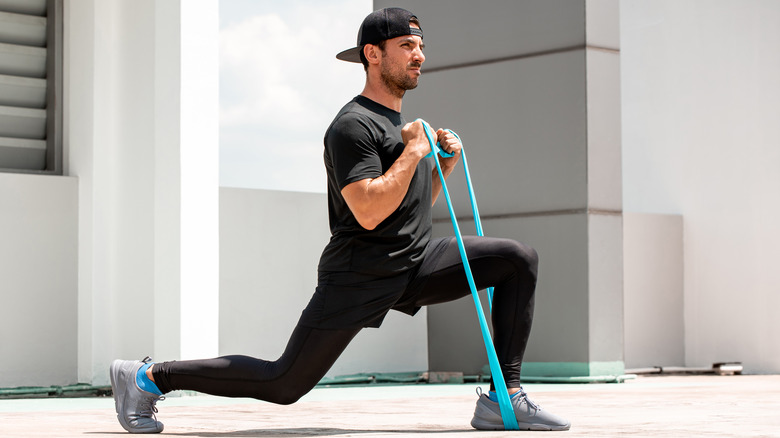What Is Muscular Endurance?
When you think of strength training, a beefy guy carrying heavy dumbbells might come to mind. However, building large muscles is only one type of strength training. According to the American Council on Exercise (ACE), there are several types of strength to consider. Your ability to pick up and carry a laundry basket is called agile strength. It's about moving something across multiple planes rather than isolating a particular muscle. Explosive strength is what Olympic lifters work on. It's about moving something quickly using a lot of power.
Golfers and baseball players work on speed strength, which is how much force you can exert during a high-speed movement. Football players and track athletes are good at starting strength, which is how strong you can exert yourself from a stationary position. Now suppose you and your friend both weigh 130 pounds, but you can squat 100 pounds and your friend can only squat 80. You would have more relative strength than your friend. On the other hand, what's the one-repetition max you can squat? Whatever it is, that's called maximum strength. Whether you're a long-distance runner or cyclist, you'll need to focus on muscular endurance (via Byrdie).
Three types of muscular endurance
Although strength training might include several types of power during a workout, muscular endurance is concerned with how long you can tax the muscles (via Byrdie). Sports Fitness Advisor separates muscular endurance into three categories, and each category will require different approaches. Power endurance involves short bursts of power repeated several times within 30 seconds, such as what's required of tennis players or short sprinters. To build power endurance, use a moderate weight for 15 to 30 reps, and combine two to four exercises in a circuit. You'll need at least five minutes of rest between exercises.
The second type of muscular endurance is known as short-term muscular endurance. Soccer players and longer sprinters will need this type of strength because it involves up to two minutes of muscle intensity at a time. You'll create a circuit of exercises using a slightly lighter load — about 40% to 60% of your one rep max — for a set amount of time or repetitions.
Triathletes and marathon runners will look for long-term muscular endurance. Long-term muscular endurance requires the muscles to perform for much longer than two minutes at a time. Training for this type will still involve a circuit, but you'll use significantly lighter weights and move from one exercise to another without stopping to rest.
Other ways to boost muscular endurance
If you're a runner, you might find that you have strong muscular endurance in your legs, but maybe not in your upper body. That's because muscular endurance can be limited to specific movements in your upper or lower body (via Byrdie). In other words, you might be able to blast through 300 air squats but struggle with push-ups.
For general muscular endurance, use lower weights so you can pump out 15-25 reps, according to a 2011 position paper in Medicine & Science in Sports & Exercise. The National Academy of Sports Medicine suggests incorporating supersets into your workouts using a standard strength exercise followed by a stability exercise. For example, you could start with 10 heavy-weight reps on the bench press and then immediately move to slow-tempo push-ups on a stability ball. Tempo increases your muscles' time under tension, which improves muscular endurance (via Byrdie).
Muscular endurance is not only important for sports and fitness, but it's also needed in order to maintain your overall health and energy for your daily activities, such as walking a long distance back to your car (via Livestrong). In fact, a 2014 study in the International Journal of Sports Medicine found that improving your muscular endurance can reduce your triglycerides, LDL cholesterol, glucose, and blood pressure while also boosting your HDL cholesterol.



